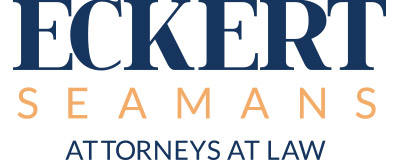Recent Significant NLRB Decisions
January 5, 2018
INTRODUCTION
The National Labor Relations Board (“NLRB” or “Board”) recently issued a number of significant decisions, some of which reversed controversial Obama-era NLRB rulings generally considered to be pro-union. These decisions return the state of the law regarding the standards for determining joint-employment, the legality of work rules that impact employees’ rights under the National Labor Relations Act (“NLRA”), and the determination of appropriate units for bargaining to what it was before the “Obama” Board’s decisions. This Alert will address each of the decisions in more depth below.
Joint Employment
In Hy-Brand Industrial Contractors and Brandt Construction Co., 365 NLRB No. 156 (2017), the NLRB reinstated the traditional test for determining whether ostensibly separate employers are joint-employers, explaining that the inquiry rests on whether they co-determine the working conditions of employees. In doing so, the Board reversed Browning Ferris Industries, 362 NLRB No. 186 (2015), an Obama Board decision setting forth a more lenient standard.
In Hy-Brand, the Board found that Hy-Brand and Brandt Construction were joint-employers and both were liable for the discharge of certain of each other’s employees. In doing so, however, the Board rejected the Administrative Law Judge’s reliance on Browning Ferris. Instead, it held that the Browning-Ferris joint-employer test, which found a party to be a joint employer if it possessed indirect control over the other’s employees, or reserved to itself control which it did not exercise, to be an impermissible expansion of the common law definition of an employer. The Board reaffirmed the pre-Browning Ferris standard under which joint-employer status will be found only where the ostensible joint-employer exercises actual and direct control over the employees, which is not merely routine. Having “potential” control or indirect control over the employees is no longer sufficient to establish joint-employer status.
This decision is beneficial for employers because it restores predictability and confidence as to who is an “employer,” especially in the context of outsourced labor, subcontracting, temporary hires through employment agencies, and franchises.
Workplace Rules
In The Boeing Company, 365 NLRB No. 154 (2017), the Board revised the test for determining whether a facially-neutral work rule unlawfully restricts the rights of employees to engage in activity protected by Section 7 of the NLRA, reversing a previous Board decision in Lutheran Heritage, 343 NLRB 646 (2004).
Under Lutheran Heritage, a facially neutral work rule was unlawful if an employee “reasonably could construe” the rule as restricting the exercise of Section 7 rights. Under this standard, employers could violate the NLRA even if their rules or policies did not explicitly prohibit protected activities; they were not created in response to employees engaging in protected activity; and they were not applied with respect to protected activity. The ruling in Lutheran Heritage had broad implications for employers insofar as the NLRB could invalidate their rules and policies whenever they could reasonably be interpreted as infringing on employees’ protected activity.
Boeing involved a rule prohibiting the use of cell phones and other camera-enabled devices to record video or to capture images in the workplace without a valid business need or a permit. Using the Lutheran Heritage test and citing prior cases involving work place filming bans, the Administrative Law Judge found Boeing’s rule unlawful insofar as the employees could reasonably construe the rule as restricting their Section 7 rights to document safety violations, protected workplace conduct, or NLRA violations.
Revisiting this issue, the NLRB reversed Lutheran Heritage because the focus only on the employee’s interpretation of any rule prevented consideration of the employer’s legitimate purposes in promulgating the rule. Holding that a
proper analysis of the issue required the balancing of the rights of employees against the rights of the employer, the Board crafted a more practical standard, which requires consideration of “the nature and extent of the potential impact on NLRA rights and…legitimate justifications associated with the rule.” In establishing this test, the NLRB also created three categories into which rules and policies will fall. First, those that do not prohibit or interfere with the exercise of NLRA rights or whose potential adverse impact on protected rights is outweighed by justifications with the rule are lawful. These include, for instance, “no camera” rules and civility standards. Second, rules and policies may require an individualized analysis to ascertain if they would prohibit or interfere with NLRA rights, and if so, whether any adverse impact on NLRA-protected conduct is outweighed by legitimate justifications. Third, rules and policies that prohibit or interfere with the exercise of NLRA rights or whose potential adverse impact on protected rights is not outweighed by justifications are unlawful. An example of this type of rule would be one preventing employees from revealing their wage rates.
The practical effect of the Boeing decision is that the legality or illegality of any rule will be determined by balancing the rule’s effect on employees’ rights against the business purposes underlying the rule. In Boeing, the Board found that the security concerns underlying the ban clearly outweighed the employees’ Section 7 rights.
Micro Units
In PCC Structurals, Inc. and International Association of Machinists & Aerospace Workers, 365 NLRB No. 160 (2017), the Board reversed the Obama Board’s decision in Specialty Healthcare, 357 NLRB No. 83 (2011).
Specialty Healthcare had established a new test for determining whether a group of employees constituted an “appropriate unit” for bargaining. Under that test, if the employees in a proposed bargaining unit were a “readily identifiable group” based on factors such as their job classifications, functions, or supervision, that group would be found to be an appropriate unit unless the employer could establish that other employees, excluded from the union’s proposed unit, had an “overwhelming community of interest” with those employees in the proposed unit. That test made it easier to organize “micro units” by placing more emphasis on what the petitioned-for employees had in common among themselves, rather than what they had in common with other employees.
In PCC Structurals, the union petitioned to represent approximately 100 rework welders and rework specialists that were responsible for the second stage of metal fabrication. The employer challenged the petition, claiming that all 2,565 production and maintenance employees should be in the unit. Relying on Specialty Healthcare, the Regional Director found that the excluded employees did not possess an “overwhelming community of interest” with the petitioned-for rework welders and specialists despite the fact that both groups had similar hours, were paid under the same wage scale, received the same benefits, wore similar attire and protective-gear, participated in the same training, and were subject to the same handbook and workplace rules.
The NLRB reversed Specialty Healthcare and returned to the pre-existing traditional “community of interest” test. Under this test, when an employer wishes to add employees to a union’s proposed bargaining unit, the Board will determine whether the employees: (1) are organized into separate departments; (2) have distinct skills and training; (3) have distinct job functions and perform distinct work, including inquiry into the amount and type of job overlap between classifications; (4) are functionally integrated with the employer’s other employees; (5) have frequent contact with other employees; (6) interchange with other employees; (7) have distinct terms and conditions of employment; and (8) are separately supervised.
This decision effectively makes it much easier for employers to contest the creation of “micro units.”
The Labor & Employment Alert is intended to keep readers current on matters affecting labor & employment, and is not intended to be legal advice. If you have any questions John Nadler at 215-851-8410, Derek Illar at 412-566-6771, or any other attorney with whom you have been working.



